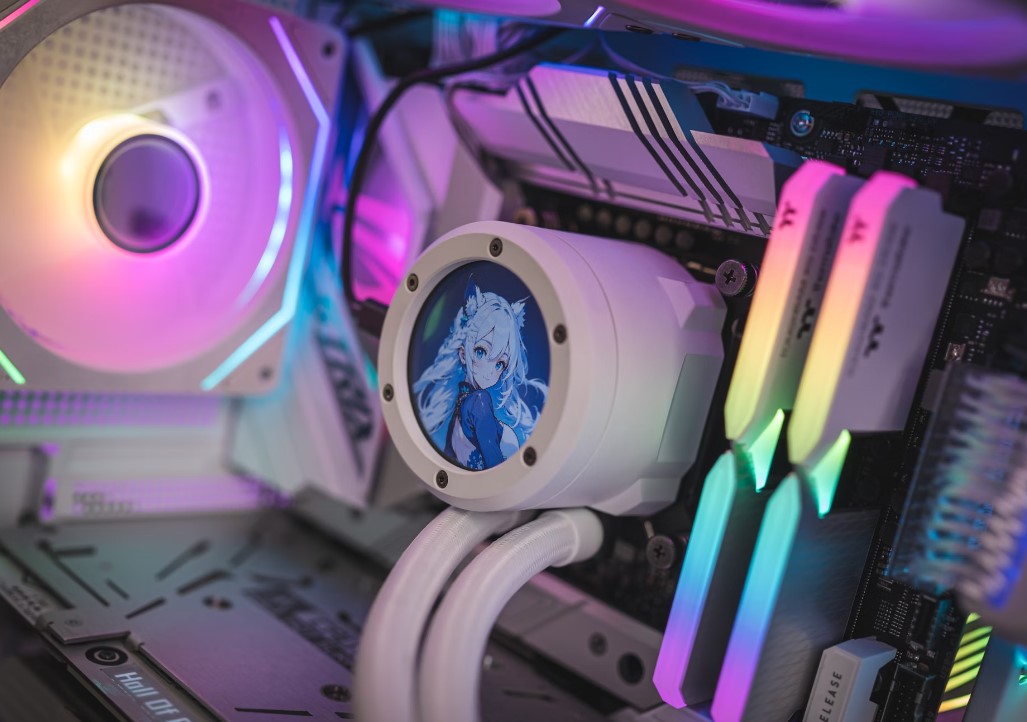
When most people think of cybersecurity threats, they imagine viruses, phishing emails, or hacked Wi-Fi networks. But a more silent and unexpected risk is emerging — one that uses sound instead of code, and air instead of networks. This new technique, known as fan noise data exfiltration, reveals just how inventive cybercriminals have become.
At first glance, it may sound like science fiction. But researchers have demonstrated that attackers can actually use the noise from a computer’s internal fans to leak sensitive data — even from machines that are completely isolated from the internet. And the implications for government agencies, financial institutions, and industrial control systems are serious.
The Hidden Danger of Air-Gapped Systems
Air-gapped systems are computers that are deliberately disconnected from the internet and any external network. They’re often used to store or process highly sensitive data in places like:
-
Military defense networks
-
Nuclear power facilities
-
Financial institutions
-
Industrial systems managing critical infrastructure
These systems are considered ultra-secure because they can’t be reached through conventional cyberattack methods like malware over email or remote access tools. However, researchers at Ben-Gurion University in Israel have proven that this sense of security may be dangerously outdated.
Their breakthrough study demonstrates that fan noise data exfiltration — using the sound from a computer’s internal cooling fans — can bypass even the most hardened air-gapped barriers.
Read more about air-gapped security models at CISA.gov.
How Fan Noise Becomes a Cyber Threat
Every computer has internal fans that cool down components such as the CPU, power supply, and graphics card. These fans spin at different speeds, producing slight variations in the sound they generate. While humans might not notice these differences, machines can.
The researchers designed a type of malware called Fansmitter that infects the target computer and controls the speed of its fans. By varying the fan speed, the system can emit acoustic signals that represent binary data. For example:
-
A fan spinning at 1,000 RPM might signify the binary digit “1”
-
A fan at 1,600 RPM could represent a “0”
These changes produce a unique noise pattern that can be picked up by a nearby device — such as a smartphone — and translated back into usable data. This is fan noise data exfiltration in action.
The key point? No internet, USB, or Bluetooth connection is needed. Just the fan and a nearby listener.
For insights into physical and acoustic side-channel attacks, visit NIST’s Cybersecurity Framework.
The Role of Malware in the Attack
The entire process starts with malware. The infected computer must first receive malicious software capable of controlling the fan speed. This might sound unlikely, but real-world attacks like Stuxnet have shown that even air-gapped systems can be infected — through compromised USB drives or insider threats.
Once the malware is installed, it silently adjusts fan speeds to encode and send data. This could include:
-
Passwords
-
Encryption keys
-
Usernames
-
Configuration files
-
Typed documents
The data transfer speed is slow — approximately 15–20 bits per minute — but it’s enough to transmit critical credentials over time.
The receiving end of the attack is typically a nearby device, like a smartphone, that’s been compromised to detect and decode the signals. In one experiment, researchers successfully received fan-transmitted data from a distance of over 8 meters (26 feet).
For more examples of malware behavior in isolated environments, check out MITRE ATT&CK.
Where This Threat Really Matters
You might wonder — why worry if I’m not working for the military or a major bank? The truth is, any organization handling sensitive data in controlled environments could be at risk. This includes:
-
Pharmaceutical companies with proprietary research
-
Energy facilities with access codes to physical systems
-
Data centers with confidential client information
-
Election infrastructure storing voter data
Even when speakers and microphones are disabled — creating an “audio gap” — the cooling system fans remain active. And unlike speakers, which are often removed for security, fans are essential hardware. They can’t be disabled without causing system failure.
That’s why fan noise data exfiltration is especially dangerous — it takes advantage of components you can’t simply remove.
Visit US-CERT to learn about current vulnerabilities in critical infrastructure environments.
Detecting and Preventing the Attack
Like many side-channel attacks, fan noise exfiltration is difficult to detect. But security teams can take several preventative steps:
-
Restrict Fan Control
Lock BIOS or system-level controls that allow software to adjust fan speeds. -
Limit Physical Proximity
Enforce no-phone zones in areas containing air-gapped machines. This eliminates potential listening devices. -
Monitor Acoustic Signatures
Deploy microphones or vibration sensors that can identify abnormal fan behavior. -
Disable Unused Ports and Drives
Prevent the introduction of malware through physical devices by locking down USB and FireWire ports. -
Use Sound-Dampening Materials
Soundproof server rooms or use acoustic shielding around high-security machines. -
Audit Software and Firmware
Regularly inspect system software for unauthorized modifications to low-level components like fan drivers.
Learn how enterprises implement these controls at SANS Institute.
Why This Matters in the Bigger Picture
The creativity behind fan noise data exfiltration reminds us that cybersecurity is no longer just about software. It’s about hardware, physics, sound, light, and human behavior. As defenses become more sophisticated, so do the attack methods.
It also highlights the importance of a zero-trust mindset — assuming that no part of the system is inherently safe just because it’s “offline.” Fans, power supplies, even vibrations in cables — all of them have the potential to be exploited.
Ultimately, air-gapped systems may remain among the most secure architectures available. But even they are not invincible. Knowing where your vulnerabilities lie is the first step in truly protecting your information.
Read more about physical cybersecurity at Brookings Institution Tech Policy Center.
FAQ: Fan Noise Data Exfiltration
Q1: What is fan noise data exfiltration?
It’s a cyberattack technique where fan speeds are manipulated to emit sound frequencies that represent binary data, which is then picked up by a nearby device.
Q2: Is this threat real or theoretical?
It’s real. Researchers have tested it successfully in laboratory settings. The concept has been demonstrated in peer-reviewed studies and academic papers.
Q3: How fast can data be transmitted using this method?
Current speeds are about 15–20 bits per minute — enough to leak passwords, keys, or small files over time.
Q4: Can the human ear detect this fan noise pattern?
No. The variations in fan speed are within a frequency range that blends into normal operating noise, making them unnoticeable to people.
Q5: How close does a receiving device need to be?
In tests, smartphones were able to receive the encoded data from up to 8 meters (about 26 feet) away.
Q6: Can this attack happen on any computer?
It requires malware to be pre-installed and fans that can be controlled programmatically. Air-gapped systems are the primary targets.



